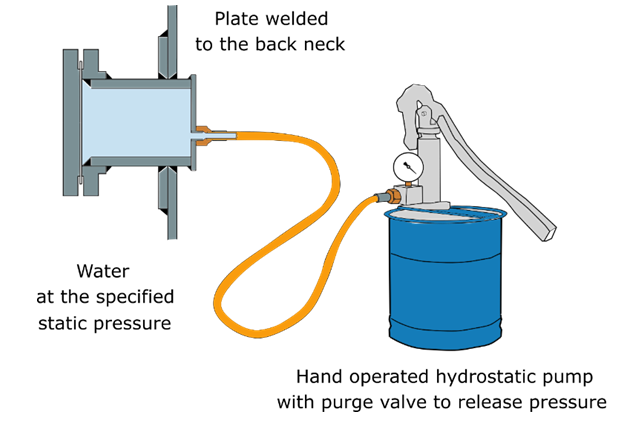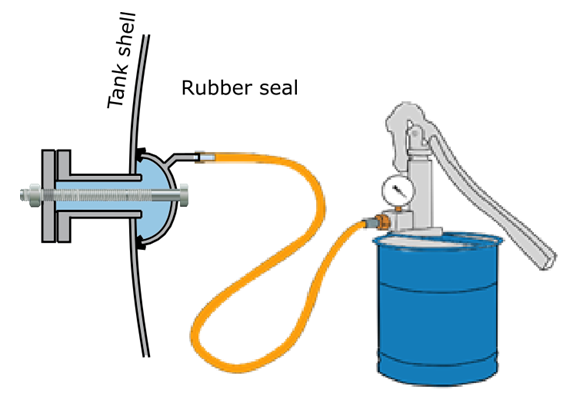How to save face when you forgot to weld a nozzle
I GOT A PHONE CALL ONE DAY FROM A FRIEND WHO was working in a new construction project with tanks and piping. He told me how the tanks he was working with 2 years old and had tilted flanges in its nozzles.
Pipefitters had a problem, because they would have to degrade their accesories to build the connecting pipe. But when we were talking we discovered that the tilting was too big according to API 650.
Something had to be done about it.
But how to do it without testing the entire tank again?
I remember once when a contractor forgot to install a manhole and discovered it after hydrostatic test (yes, it happens). When installed, the manhole´s flange wasn´t machined according to the standard.
We couldn`t carry on another hydrostatic test, so we decided to ask the contractor for an hydrostatic test of the flange only.
How?
Although it seems difficult, it is not.
Most of the nozzles and manholes of a tank, if they are not the IFR type, when looked from the inside, show an extensión of the pipe. Let`s call it “back of the neck”.
What you can do, is that you can weld a plate with filling facilities to the “back of the neck”. Then put the lid of the manhole in position and fill the space with water.
The water then can be pressurized using a positive displacement hand pump. It is important that the pump be hand operated, because of the low water volume involved. If you use a powered pump, and you are careless with the pressure gage, you could make the nozzle blow up and you could be in danger.

So, what to do with the tilted flanges in the nozzles of my friend?.
The first thing that I would do is to try and remove the flange from the nozzle and reweld it in a better position to fit the tolerance given by the standard. If that can be done, then you can test the new weld only, with an arrangement like the one before.
What to do when you don´t want to weld anything?
Once when we had to hydrostatically test an articulated drain from an internal floating roof (one of those which use swivel joints). In these roofs, there is a Little box welded under the center of the roof that acts as a collector of the rain.
The complete drain ends in a flanged nozzle situated in the Shell. But, there is no flange in the collector box underneath the roof. How to seal that end of the drain for an hydrostatic test?
By using a setup like the one drawn below (specially with small nozzles)

But what if is the neck of the nozzle that is too tilted? And what you do if you already made the hydrostatic test?
That would be a little more difficult, but not imposible.
You would have to build an enclosure having the same curvature of the Shell so you can put it against the Shell. The seal between the 2 surfaces can be accomplished using a foam rubber. Then you can put some threaded tie rods. As seen in the picture. Then you can test the new nozzle only and not the tank again.

Everything is possible. If you forget to install a nozzle, you can install it after hydrostatic test if you know what you are doing.
NEW COURSE
In the next months, I´ll be publishing a course on how the pass the API 653 exam on the first try. It will save a lot of money to the people interested. If you want more information, please subscribe to my email list in the box below.
Leave a Comment